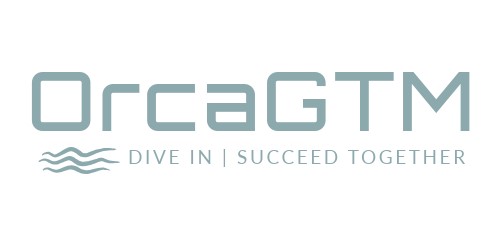Bringing a medtech or healthtech solution to market? Whether you’re digitizing clinical workflows, unlocking real-world evidence, or improving patient access, a successful go-to-market (GTM) plan isn’t just about launch — it’s about traction, focus, and long-term impact.
At OrcaGTM, we help small to mid-sized companies commercialize with confidence. Here are 10 GTM priorities we believe are essential to success:
1. Clear Value Proposition Anchored in Clinical Outcomes
A clear value proposition keeps your GTM plan focused and helps avoid scope creep. Follow these suggestions to help you stay on track:
- Articulate how your product improves patient outcomes, reduces the cost of care, or enhances workflow efficiency.
- Ground the value in market reality — observe how target users work today, and identify friction points they may not even recognize until your solution reframes the problem.
- Determine your goal for the launch: Do you want to build awareness? Improve adoption? Increase sales revenue?
2. Right-Size Your Sales and Distribution Model
Understanding how you plan to navigate your sales channels gives you the opportunity to set up efficient sales processes before you approach potential customers.
- Are you going direct, through GPOs, via channel partners, or in collaboration with pharma?
- Align both how your buyers buy and how your solution is used to hone your GTM strategy.
3. Know the Full Buying Committee
Healthtech sales rarely involve a single buyer. Research everyone involved in your potential client’s procurement process to increase your chances of a successful sale.
- Map the ecosystem: economic buyers, clinical champions, procurement, data security, and compliance. Influencers make the case and drive the sale.
- Each persona has unique drivers — your messaging and materials should reflect what is important to them.
- Use this information to make an emotional connection with the buyer and user to enhance brand loyalty.
- Tailor the message to key decision-makers and influencers — from patients to clinicians, payers, IT, and hospital administrators.
4. Back It Up with Evidence
Enhance your sales pitch by providing convincing evidence that demonstrates not only the functionality of your solution but also its substantial benefits to the user.
- Build credibility with clinical outcomes, workflow metrics, and real-world impact.
- Use pilots, early adopters, and KOL endorsements to strengthen your narrative — and always lead with proof over promise.
5. Segment by Pain, Not Just Market Size
Analyzing market size creates your first segments, but don’t forget to define why a healthcare organization might buy your solution.
- Prioritize segments based on urgency, budget readiness, and impact.
- Determine who could use your solution now.
- Filter your list down to who needs your solution now and have the incentive to act.
6. Anticipate Regulatory and Compliance Pathways
Anticipating regulatory and compliance pathways before approaching potential customers will put you one step ahead of competitors.
- Whether you’re navigating HIPAA, GDPR, FDA, EMA, HTA, or payer reimbursement pathways, build compliance into your GTM strategy early.
- Doing this proactively creates trust and shortens time to contract.
7. Create Flexible Pricing and Commercial Models
Flexibility lowers friction and helps buyers say “yes” faster — especially in budget-constrained environments.
- Consider pilots, usage-based pricing, subscriptions, or hybrid models.
- Describe your pricing models clearly, highlighting the benefits of each.
8. Lead with Content and Credibility
A strong content marketing plan shows your knowledge, provides opportunities to qualify leads, and gives the right information at the right time to improve your chances of a sale.
- Use webinars, white papers, case studies, and clinical stories to educate and build trust.
- Become a voice of insight in your niche — people buy from those who teach, not just pitch.
9. Empower Champions and Ensure Post-Sale Success
A completed sale doesn’t mean your GTM process has come to an end for that customer.
- Give internal champions the tools they need to influence cross-functional decision-makers.
- Support onboarding and value realization post-sale, because retention and expansion start at implementation.
10. Track the Right GTM Metrics
Data can only support decisions if you have the right data at the right time. Follow these guidelines to avoid data overload.
- Early: lead quality, pilot conversion, stakeholder engagement.
- Mid: onboarding success, adoption rates, customer satisfaction.
- Late: expansion revenue, referrals, renewals, and NPS.
Guidance | Traction | Momentum
A detailed GTM strategy with clear goals, target market definitions, and a detailed plan can help you manage your resources as you forge ahead to help improve healthcare. Contact us today for a free 30-minute consultation.


